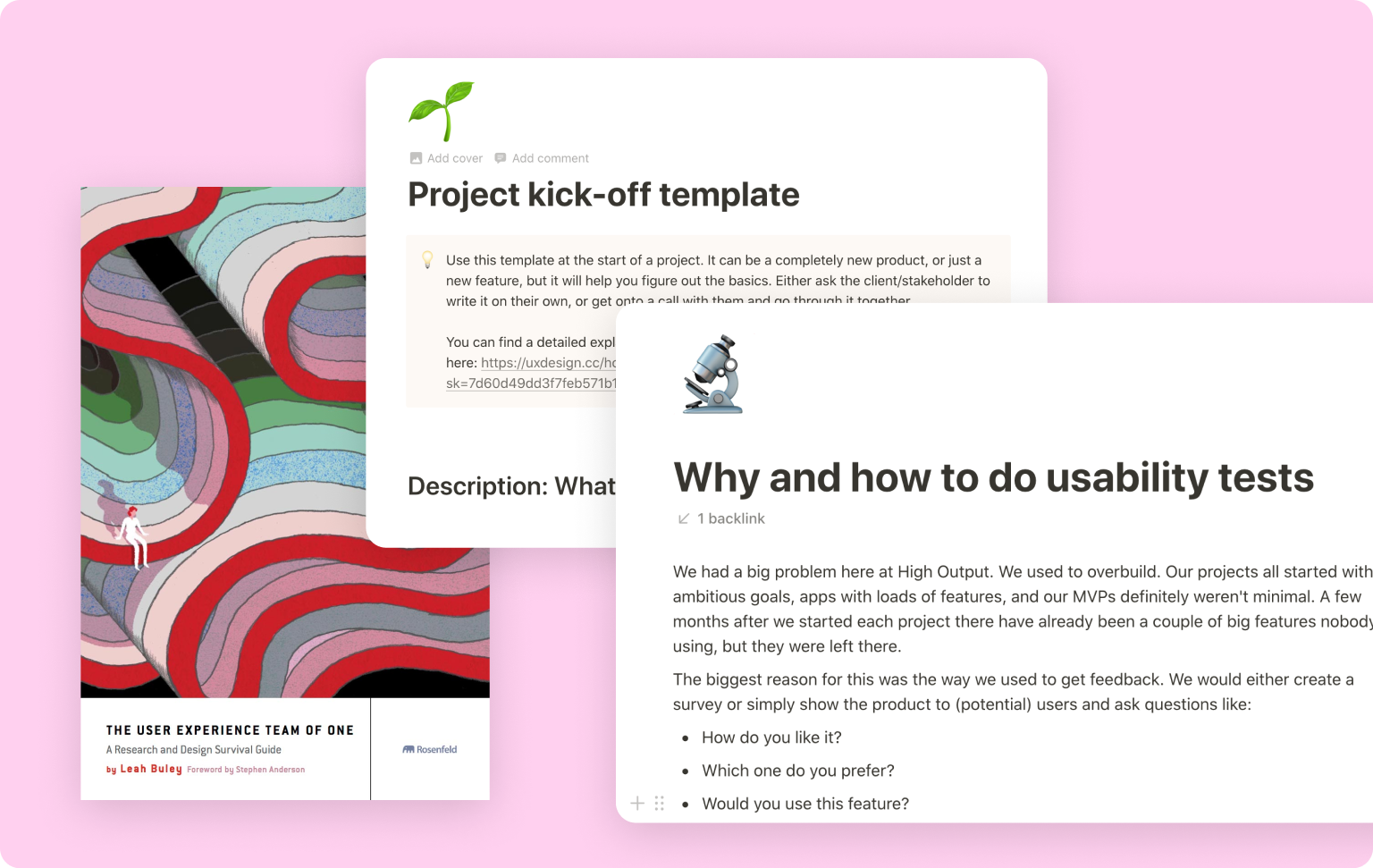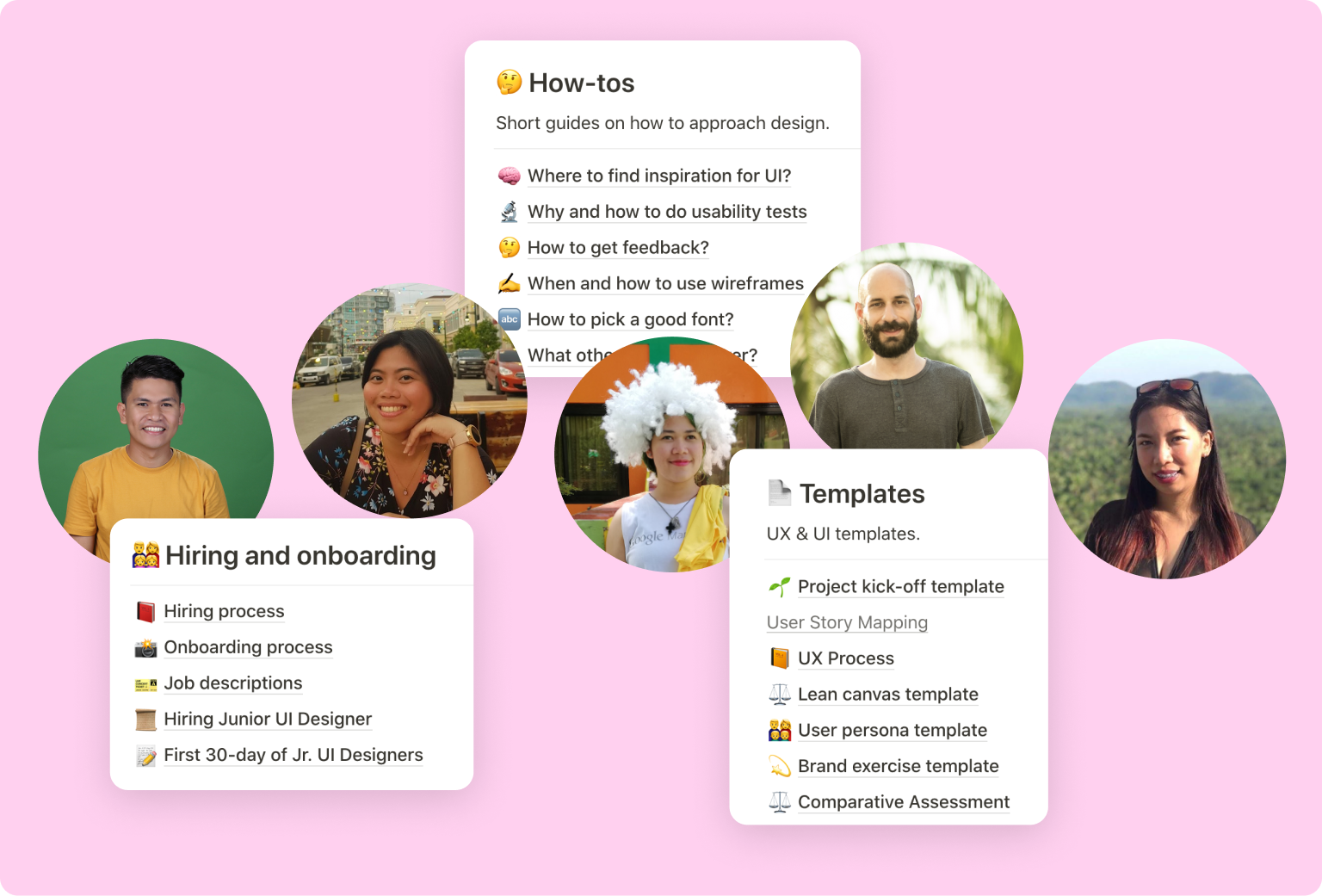Overview
When I joined HOV back in 2017 as their first designer, it was a dev shop: a dozen talented engineers writing great code that runs smoothly and focusing on client work, but design was their pain point. As they’ve started building their own internal products, it was obvious there was a gap there.
- There was no user research, so it wasn’t really clear what problem they were solving or who’re they solving it for.
- There was no prioritization. If the loudest person suggested a feature that “sounded cool”, it would be built.
- No one was gathering feedback, so it was impossible to know if something is working or not.
My job was to help fix this and start growing the company’s design department. Looking back now, I was very naive and optimistic thinking I knew what it takes… It was definitely a bumpy ride. 🤕
What I knew is there’s no way we can make a big change all at once. I’ve spent the first couple of months getting familiar with people, projects, tools, workflows.
Here are some of the challenges we ran into and how we (tried) to solve them:
We need a design process
First, we fooled ourselves with thinking we need to define One Big Ultimate Design Process, which would be a giant flowchart and would work for all our projects. But we quickly learned each project is different and this doesn’t make sense. The User Experience Team of One book was a life-saver here. It made so much sense to view the process as a toolbox and pick only the tools you actually need right now. So we added a couple of them to our toolbelt:
- A simple Product Requirement Document template helps put everyone on the same page before a project starts.
- User story mapping helps us visualize the entire flow of the product and shape it so our MVPs are, well, minimal
- Regular usability testing helps us get objective feedback from actual users
- Brand sprints help us quickly come up with good-enough branding direction for MVPs, since that’s all they need at this point

We need more designers!
We quickly realized one designer jumping between multiple projects is not a solution. So we decided to hire more. I was in charge of the hiring process:
- Defining the roles we’re looking to fill and writing job ads
- Creating the hiring funnel: from the first contact to design exercises and how we’re going to rate them
- Interviewing candidates and helping pick the right ones for the job
Okay, now we need to train the designers
This was my first time having a manager, and now I have to be someone else’s manager? Yikes 😅 This part was really scary at first and I had to learn as I go. Luckily, I had lots of support from my manager, Usman, and spent a lot of time reading about it.
I’ve experimented and now I kinda (but only kinda) feel I know what works:
- It’s not just about work: you need to accept your teammates as people with different personalities, quirks and lifestyles. They have lives and struggles outside of work. Sometimes you can help them with that too, but sometimes you can just be there for them.
- Weekly 1-1 meetings. Related: No matter how hectic things get at work, I dedicate one hour weekly to each of my fellow designers and we talk about anything that’s on their mind that week. Sometimes it’s design feedback, sometimes it’s venting and ranting, but we’re always glad we did it.
- Clear expectations and regular feedback. You don’t want to be setting people up for failure and they need to know if they’re moving toward success. A handy concept here was Andy Grove’s Task Relevant Maturity. Yeah, I know the phrase sounds boring, but I promise it helps.
It’s a good feeling seeing people grow over time, and even better knowing you helped them on their journey. Estella started as a junior QA and is now an amazing UI designer and manager. Marko started as a junior UI designer and he’s now handling both UX and UI like a pro.
Okay, now we need to make all these designers work together
HOV is always juggling between a couple of projects, both internal and client work. Designers often jump into a new project if it gains traction quickly. That means we had to:
- Organize Figma. From how we structure files and libraries, to how we name components.
- Create a design system for MVPs. When each project starts with a standardized base, it’s both faster to start and designers can get onboarded quickly. (note: while I’ve started work on the design system, Loisy and Marlon have taken it to the next level over the years)
- Create a resource library. This is a list of recommended fonts, Figma plugins, illustration packs etc. so you have everything you need to quickly spin up an MVP.
Is this thing even working?
We’ve struggled with analytics for a long time, experimenting with different tools, tracking plan templates, integrations… What finally made it click for us was the combination of Google’s Goals / Signals / Metrics and HEART frameworks.
This short exercise for the entire team helps us figure out the most important metrics we should track without getting overwhelmed. And standardized templates help us define a tracking plan with events and properties, so my awesome teammate Chris can set them up in Mixpanel.
It was a great feeling finally being able to see how people use your products and
We could finally see how people are using our products and trust the data. And our weekly update meetings started transforming from “here are the features we shipped” to “this is the impact we made”.
Lessons & outcomes
We’re now a team of 7 designers, and I’m really proud of each one of them. We have workflows and rituals that are constantly evolving and improving. There’s a lot more attention to how products work and what they look like at HOV since we started.
I’ve learned a lot during this time. Helping junior designers level up taught me patience, something I was definitely lacking during my freelance years. Helping organize the design department forced me to zoom out and look at the design from a whole new perspective. But when I look back, the thing that stands out the most is people. We laughed together, cried together, learned together. It’s never just about work.
👉 From the archive: Little Zebra Shopper

